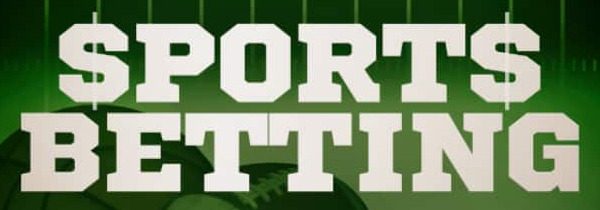When most sports bettors think of placing bets, they typically think of betting on full game action. But betting markets like point spreads and over/unders can also be broken down into halves of the game. Here, we discuss some of the nuances of first half and second half bets and what bettors should think about when taking on each half of a game from a betting perspective.
First Half Bets
First half bets work in the same manner as traditional wagers, but are only concerned with the score at halftime, which is when the bet will be graded as a win or a loss. If, for example, the Chicago Bears are favored by 6 points with a total of 46, a first-half line will likely see the Bears favored by 3 to 4 points, with a first half total of 23 or 23.5.
The first-half line does not simply divide the full game line in half. A 35-point favorite in college football will often be closer to a 21-point favorite in the first half, as the favorite is expected to play better in the first half on the assumption that it will pull its starters at some point in the second half.
Conversely, in college basketball games, it’s expected that roughly 10 more points will be scored in the second half than the first. If the total for the full game is 140, a first-half total would likely be between 65 and 66 points.
The equivalent of a first-half bet for baseball is a five-inning bet, which is becoming more popular as the number of poor relief pitchers appears to be at an all-time high. Bettors are finding they can essentially remove the bullpen from the equation by betting the first five innings. The prices on underdogs are frequently smaller on five-inning bets, while totals are typically close to one-half of the full-game total.






Halftime Bets
A halftime bet is closely related to a first half bet, but now we’re only concerned with the score of the second half of the game. As the name implies, halftime bets are wagers made at halftime of a game and are available for nearly all NBA and NFL games, along with many of the major college games. When a game reaches halftime, the sportsbooks will post odds for the second half, so you have a small time frame to place your bet before the second half begins. Halftime odds are posted both on the side and the total.
The biggest influence on the halftime line is obviously the score of the game. The halftime odds are going to be different if a 14-point favorite trails 24-10 at halftime than they will be if the favorite leads 24-10 at the half.
If a college football team leads another 38-0 at halftime the second-half total may only be 21, as both teams will likely be trying to run out the clock and have many of their backups in the game. While some halftime odds may look too good to be true, the sportsbooks aren’t dummies and use computer models to help them set the halftime lines, as they only have a minute or two to create the lines and allow bettors to wager on them before the game resumes.
More Sports Betting Guides
- Sports Betting Dictionary, Terminology & Bet Types Meanings
- 4 Tips For Making Successful Bets
- Basketball Betting Guide – How To Bet On Basketball
- Parlay Sports Betting
- What Are Prop Bets – How To Bet Proposition Bets
- Pleaser Sports Betting
- Teaser Betting
- Over Under Betting
- Money Line Betting
- Point Spread & Betting Lines Explained
- What is Against the Spread
- What Does -110 Mean In Sports Betting? Betting Odds Explained
- What is Reduced Juice Betting?
- Bet To Risk vs Bet To Win – Wager Amount vs Risk Amount
- How To Read Rotation Numbers & Sports Betting Odds
- What Is a Progressive Parlay? How To Bet Progressive Parlays
- 3-Way Money Line

